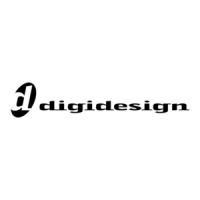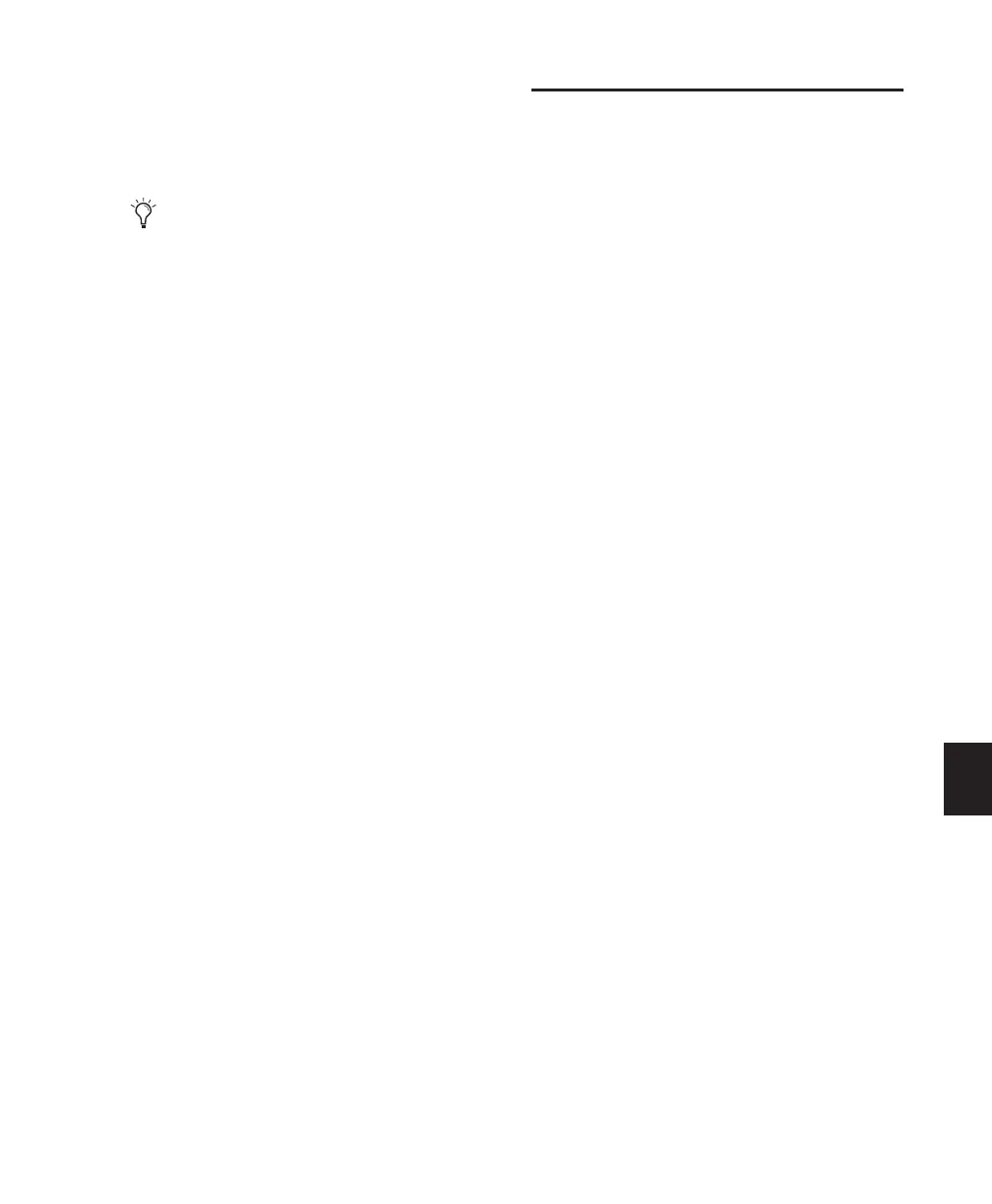Chapter 31: Mixdown 755
6 Do one of the following:
• To bounce the entire session, click Return
to Zero in the Transport window to go to
the beginning of the session.
– or –
• To bounce a portion of the session, enable
Options > Link Timeline and Edit Selec-
tion, and make a selection in the Edit win-
dow.
7 Choose File > Bounce to > Disk.
8 Choose the source path you want to bounce.
9 Configure other Bounce to Disk settings as ap-
propriate. See “Bounce Options” on page 747.
10 Click Bounce.
11 Select a destination for the new audio file,
enter a name, and click Save.
Mastering
In the final mastering process, you might record
directly to disk, DAT, DVD, CD, stereo master-
ing recorder, or a multitrack recorder (for sur-
round mixes).
Once you have created a master of your session,
you can transfer it to a portable medium for du-
plication. You can transfer the master file to CD
or DAT to be used as a master for pressing com-
pact discs.
Mastering to a Digital Recorder
Although it is usually best to master sessions di-
rectly to hard disk, Pro Tools also lets you mas-
ter digitally, direct to any AES/EBU-equipped or
S/PDIF-equipped digital recorder such as a DAT
deck.
24-Bit Input and Output
Pro Tools|HD systems support full 24-bit audio
input and output signal paths, with 48-bit inter-
nal mixing and processing, providing an addi-
tional 16 bits of headroom at the top of a chan-
nel’s dynamic range, and 8 bits at the bottom.
You can exchange files with other 24-bit record-
ing systems without any bit-depth conversion
(as long as they are in a compatible file format).
Pro Tools LE systems support 24-bit input and
output, and uses 32-bit floating point mixing
and processing internally. You can exchange
files with other 24-bit recording systems with-
out any bit-depth conversion (as long as they
are in a compatible file format).
By default, the bounce will end at the last
audio waveform or MIDI note. To end the
bounce sooner, make an Edit or Time selec-
tion to define the end (and start) of the
bounce.

